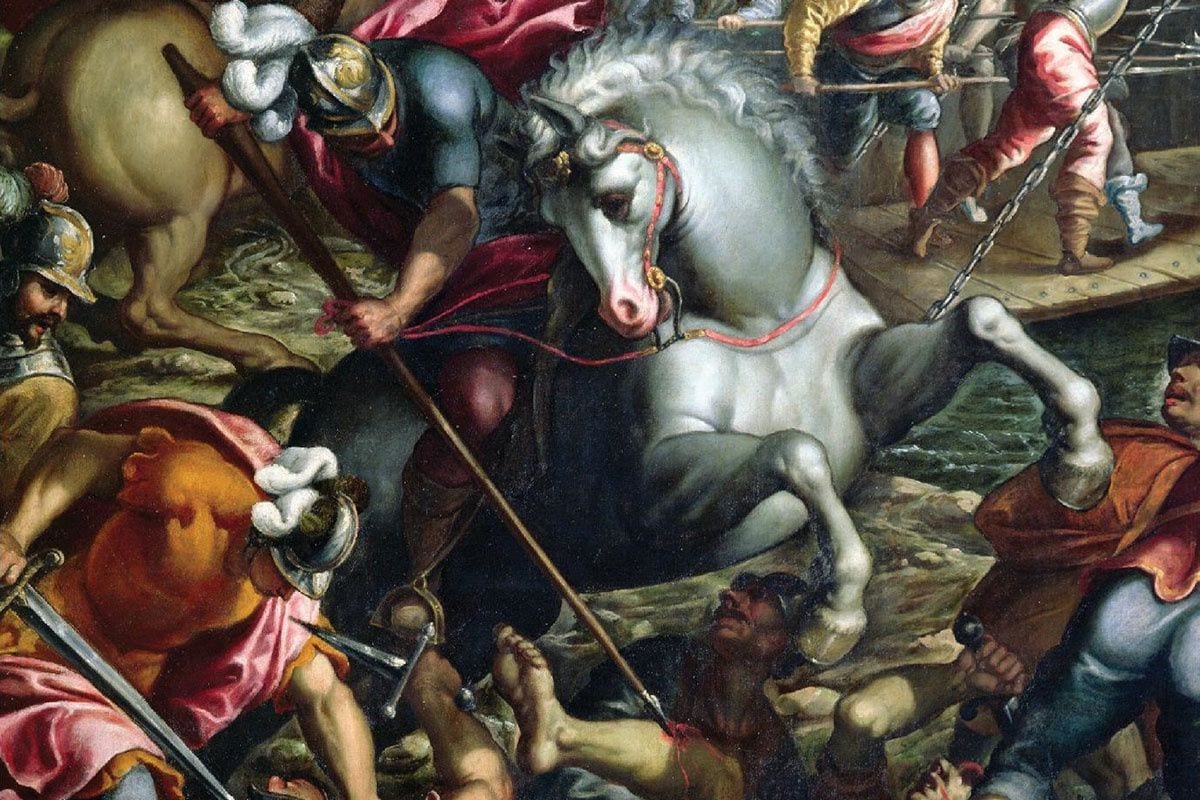
Southeastern Europe represents an odd patch of darkness in some of global consciousness. Perhaps as a consequence of its internal boundaries that have changed almost continuously for the last 200 years, even educated Europeans sometimes struggle to distinguish Budapest from Bucharest, or to correctly place countries like Slovenia, Albania, and Serbia on a map.
With its 700 densely-written pages, historian Marie-Janine Calic‘s The Great Cauldron: A History of Southeastern Europe, translated by Elizabeth Janik, is the sort of text that strives to fill that chasm – every last nook of it. Indeed, it covers in detail the history of a geographical region that currently comprises more than a dozen nations, from its earliest recorded tribes through to modernity. Calic’s work examines not just the ‘traditional’ history of political and military events, but also the separate economic, cultural and spiritual developments, and often even the profiles of individual cities.
Whichever way one looks at it, The Great Cauldron is an impressive work. Calic seems to have read everything, and there isn’t a single paragraph in this volume without a bibliographical note to back up its claims and point towards further reading. Her approach is undeniably exhaustive, and the book is structured in such a way that readers with a special interest might consult it to read specifically about, say, the religious conflicts in the region or its industrial history.
Unfortunately, as well as being exhaustive, The Great Cauldron is also exhausting, and casual readers looking for an introduction to the subject-matter should probably start elsewhere. The book is full of raw data and endless lists of variously influential characters, and it is organised thematically rather than chronologically, which defuses the traditional reading pleasure of following a narrative. Moreover, Calic assumes a certain degree of education from its readers: she will sometimes reference external historical factors (say, the Crimean War) to discuss their influence on the Balkans, but she doesn’t always explain what these were, so readers without a solid knowledge of European history and culture will be challenged.
In one exemplary paragraph, she expounds on the struggles of Christianity with the heretical beliefs of dualism. “In the Early Middle Ages,” she writes, “dualism lived on in the form of Gnosticism, Paulicianism, Manichaeism, and other variations. Its core belief was the opposition of two powers from the time of creation – the good God and evil Satan, invisible spirit and material world, the contradiction between light and dark.” I challenge anyone to look at this description and tell me that the distinction between Christianity and dualism is entirely clear. But in truth, a spiritual discipline like Gnosticism is radically different from Christianity, and understanding at least the basics of that difference is key to understanding what the religious conflict was about. Calic’s treatise is interesting and informative, but only if you already have some grounding in the topics she is talking about; otherwise, her list of religious cults is likely going to wash over you as a sequence of indistinguishable ancient names.
The accessibility of the book is further hampered by the fact that the first chapter, ‘Southeastern Europe before 1500’, is at once the most difficult and the weakest. In attempting to cover a huge period of time in only 60 pages, Calic makes a massive jumble of tribes, cultures, religions, empires, kingdoms, leaders, and languages that left me more confused than enlightened. Ironically, for all of the things she throws into the ‘great cauldron’ of Chapter One, I can’t help but feel that she glosses over too much that is important. For example, the very remarkable and sophisticated Bulgarian Empire, which the author constantly refers back to in later chapters, is barely given any consideration.
Said frankly, I feel the book would have worked better if the first chapter had been excised completely, for this is really a history of Southeastern Europe from the Ottoman occupation onwards. Indeed, the writing really takes off from Chapter Two, and stays on from there at a steady level of excellence. As she deals with brackets of time that are more contained and coherent, Calic does a much better job of bringing the period(s) to life and giving a sense of the historical forces at work in the region.
Calic is a professor at the Ludwig Maximilian University of Munich, and The Great Cauldron was printed by the Harvard University Press. The academic heritage is undoubtedly apparent: aside from being utterly rigorous and thoroughly cross-referenced, the book adopts a style that is dry to an extreme. Even when describing the most abject humanitarian atrocities (and there are quite a few), Calic remains impassioned and neutral. This is probably the best approach for someone attempting to deal with history objectively, but it does not exactly make for compelling writing, or reading, and readers should be aware of this (further) hurdle.
For specialists, I expect The Great Cauldron will be a phenomenal resource. If, for instance, you desire to write a novel set in 17th Century Sarajevo, here you will find a wealth of useful material as well as references to other works that can help you recreate life in those times. For casual readers who just wish to introduce themselves to a part of history that is very seldom given the attention it deserves (at least in the English language), this may not be the best starting point. The Great Cauldron is a challenging, heady, sometimes confusing read that will demand of you at least as much as it yields.

